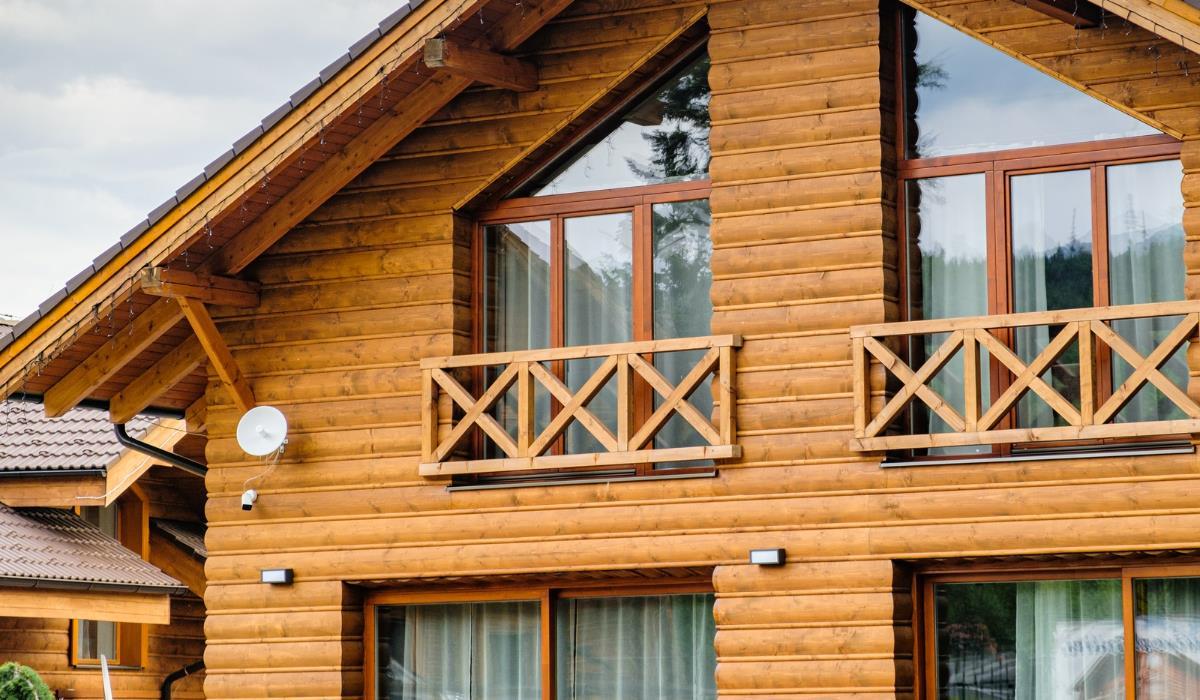Wood, as a natural material, is associated with warmth, coziness and tradition. In Poland, wooden facades have a long history and fit into the landscape of our homes. However, to maintain its beauty for years, proper care is necessary. Find out how to best care for wooden facades, whether it is worth impregnating them or painting them.
Wood is a material that has been used in construction for centuries. Its popularity is due to the ease of obtaining, processing, as well as its natural beauty, which becomes more expressive over time. Although it is no longer as widely used in construction as it once was, it can still be found in many of our homes. It is important to know how to properly care for wooden facades to maintain their beauty for years.
Wooden facade – selection of wood species
If you are planning a wooden facade, choosing the right type of wood is a key issue. It is worth choosing well-dried wood with a moisture content of 15-18%. Typically, seasoned or kiln-dried wood is the best choice. Of the native species, oak and larch are the most durable, although due to the costs and difficulties in obtaining, they are relatively rarely used. Alder is very popular because it is not only warm, but also has interesting colors. However, the most frequently used species for facades are spruce and pine. Due to their flexibility, they are resistant to loads. Their durability and resistance to moisture can be increased by the presence of natural resins.
More and more often, you can find imported wood on facades, such as Siberian larch or Scandinavian pine, which are known for their resistance to weather conditions. You can also achieve original effects by using exotic wood such as okoume or bangkirai. Another group of materials is heat-treated wood, such as thermo ash. Facades made of this wood are much more expensive.
If you care about durability, you should consider using heartwood. This is the hardest and darker part of the trunk, which is saturated with natural impregnating substances. This provides protection against fungi and molds. Heartwood becomes rough and gray-ash over time, which is the result of water-soluble substances being washed out from its surface.
Methods of protecting wood on the facade:

- Impregnation: Impregnations are an effective way to protect wood against mold, fungi, insects and fire. The most effective form of impregnation is the pressure method, but there are also other methods, such as bathing, painting, rubbing or spraying. Facade wood is impregnated with water or solvent-based impregnations. After applying the impregnation, the wood can be painted with paint, varnish or tinting impregnation to maintain its natural color. Impregnated wood needs to be renewed every few years.
- Varnishing: The varnish protects the wood against water, UV rays, biological corrosion and mechanical damage. However, it is necessary to renew the paint coating regularly, usually every two to three years. It is worth remembering that if the paint starts to crack, you need to act quickly.
- Painting: Paint is a good choice where the risk of mold or fungi is low. The paint covers the wood pattern and protects it for about five to eight years. Wood painted with paint can be renovated, but it is usually less durable than wood covered with varnish or impregnation.
- Staining: Stains penetrate deep into the wood, giving it color and providing protection for about four years. Stains often contain dyes that are resistant to UV rays, which prevents the wood from fading. Stained wood can also be treated with impregnation and/or varnish to extend the durability of the effect.
Ultimately, the choice of wood protection method for your facade depends on your aesthetic preferences, the type of wood and the weather conditions in your area. Whichever method you choose, regular maintenance and renovation will be crucial to maintaining the beauty and durability of your wooden facade for many years to come.



